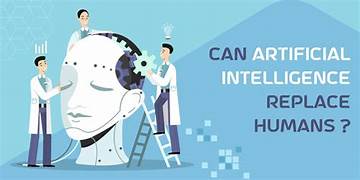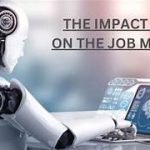Can Artificial Intelligence Replace Human Creativity?
Introduction
Artificial Intelligence (AI) has made remarkable strides, revolutionizing industries, streamlining workflows, and solving complex problems. One area where AI’s capabilities are often questioned is creativity. Creativity, often considered uniquely human, encompasses imagination, intuition, emotional depth, and cultural understanding. It fuels art, music, literature, innovation, and problem-solving.
As AI systems like ChatGPT, DALL-E, and MidJourney create art, write poetry, and compose music, many wonder: can AI truly replace human creativity? This article explores AI’s capabilities, limitations, and implications for human creativity.
1. Understanding Creativity and AI
Defining Human Creativity
Human creativity involves combining ideas, emotions, and experiences to produce something novel and meaningful. It is deeply tied to individuality, cultural context, and subjective experiences. Creative processes often include experimentation, failure, and emotional investment.
AI and Creative Outputs
AI mimics creativity by analyzing vast datasets, identifying patterns, and generating content that appears original. For instance, AI art generators produce unique paintings based on existing artistic styles, while language models write stories by learning from millions of texts. However, AI “creativity” is fundamentally different—it relies on computational logic rather than emotional depth or intrinsic motivation.
2. How AI Is Transforming Creative Industries
AI in Art and Design
AI tools like DALL-E and DeepArt allow users to create visual art by inputting text prompts. These tools are reshaping graphic design, advertising, and entertainment. Designers can use AI to generate ideas faster or create tailored content for diverse audiences.
AI in Music and Literature
AI music composition software, such as AIVA and Amper Music, produces soundtracks for films, games, and advertisements. Similarly, AI models like ChatGPT and Sudowrite assist authors in generating story ideas, character dialogues, and even full narratives.
AI in Filmmaking and Gaming
AI is enhancing visual effects, scriptwriting, and character creation in films and video games. AI-generated environments in games or automated editing tools save time and open new possibilities for storytelling.
3. The Unique Aspects of Human Creativity
Emotional Resonance
One of the defining features of human creativity is its ability to evoke emotions. A painting, poem, or song created by a human artist often reflects their feelings, struggles, and worldview. AI can mimic these elements but lacks the lived experience that gives art its emotional depth.
Cultural Context
Human creativity is deeply influenced by cultural, historical, and personal contexts. AI can analyze and replicate cultural patterns, but it does not possess an innate understanding of culture or its evolution.
Originality vs. Imitation
While AI generates outputs that seem original, it fundamentally relies on existing data. Human creativity often involves breaking conventions or imagining the unimaginable—something AI cannot achieve independently due to its reliance on historical patterns.
4. AI as a Tool for Enhancing Human Creativity
Augmentation, Not Replacement
AI excels at processing large datasets, identifying trends, and generating drafts. This makes it a powerful tool for enhancing human creativity. For example, artists can use AI to experiment with new styles, and writers can leverage AI to overcome writer’s block. However, the final creative decisions still rely on human judgment.
Collaborative Creativity
AI can act as a collaborative partner, offering suggestions and ideas that inspire human creators. This symbiotic relationship allows humans to focus on conceptualizing and refining, while AI handles repetitive or technical tasks.
Democratizing Creativity
AI tools are making creative processes more accessible to individuals without formal training. Platforms like Canva and Runway ML enable users to create professional-quality designs and videos, democratizing access to creative expression.
5. The Limitations of AI in Creativity
Lack of Intent and Purpose
AI does not create with intent or purpose. A human artist might paint to express grief, critique society, or celebrate joy. AI, on the other hand, generates outputs without intrinsic motivation or understanding.
Ethical Concerns
AI’s use in creativity raises ethical questions, such as copyright infringement and the devaluation of human artistry. AI systems often train on copyrighted material, blurring the line between inspiration and plagiarism.
Overreliance on AI
As AI becomes more integrated into creative fields, there is a risk of homogenization. If everyone relies on similar AI tools, creative outputs might lose diversity and uniqueness.
6. The Future of Creativity: Humans and AI Coexisting
Redefining Creativity
AI challenges traditional notions of creativity by demonstrating that originality can emerge from data-driven processes. This prompts a reevaluation of what creativity means and how it is valued.
Education and Skill Development
As AI takes over repetitive creative tasks, education systems must emphasize skills like critical thinking, emotional intelligence, and conceptual creativity. These uniquely human traits will become increasingly important in an AI-driven world.
Ethical AI Development
Developers and policymakers must address the ethical implications of AI in creative industries. Transparency, accountability, and respect for intellectual property are essential to ensure fair and responsible use of AI tools.
7. Can AI Truly Replace Human Creativity?
Complementary Roles
AI is unlikely to replace human creativity entirely. Instead, it will complement it by acting as a tool, assistant, or collaborator. Humans bring emotional depth, cultural understanding, and originality, while AI excels at efficiency, scalability, and data analysis. Together, they can push creative boundaries.
The Human Touch
Certain aspects of creativity—empathy, emotional storytelling, and personal expression—remain uniquely human. AI may mimic these qualities, but it cannot replicate the authenticity of human experience.
The Power of Imagination
Imagination is the cornerstone of human creativity. While AI can generate impressive outputs, it lacks the capacity to dream, invent, or conceptualize ideas beyond its programming.
Conclusion
Artificial intelligence is revolutionizing the creative landscape, offering new tools and possibilities for artists, writers, musicians, and innovators. However, AI cannot replace human creativity in its entirety. Creativity is not just about producing novel outputs—it is about expressing emotions, challenging norms, and connecting with others on a profound level.
Rather than viewing AI as a competitor, we should embrace it as a collaborator that enhances our creative potential. By leveraging AI’s strengths while preserving the uniquely human aspects of creativity, we can unlock new frontiers of artistic and intellectual exploration. The future of creativity lies not in the replacement of humans by machines, but in their harmonious coexistence.


